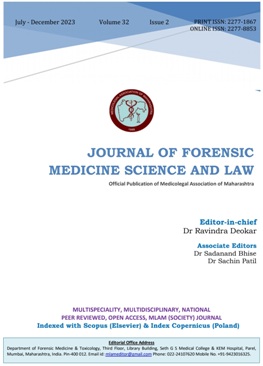Download Article
Table of Contents
| Artical Number |
5 |
| Title |
The Profile of Fetal and Infant Mortality in South-western Maharashtra Population: A Preliminary Study. |
Authors |
Laxman Gangadhar Phad, Rajesh V. Bardale, Sandeep V. Haridas |
Abstract |
Background: Fetus is the unborn offspring that develops from an animal embryo. Infant mortality rate is the probability of a child born in a specific year or period dying before reaching the age of one year. Fetal mortality remains a significant and understudied problem that accounts for 50% of perinatal death. High infant mortality rates are generally indicative of unmet human health needs in sanitation, medical care, nutrition, and education. The present study was undertaken to understand the cause of fetal and infant deaths in terms of age, sex, area of residence, pathological conditions and injuries contributing to death. Material & Methods: The present cross-sectional retrospective study was carried out on 34 deceased fetus and infants brought for postmortem examination to Government Medical College and Hospital from January 2018 to December 2019. Results: In the present study female cases (55.88%) were more than males (44.12%). 12 cases (35.29%) were fetuses 11 cases (32.35%) were neonates of age group from birth to 28 days and 11 cases (32.35%) were infants of age group 29 days to 1 year age. 19 cases (55.88%) belong to the rural area and 11 cases (32.35%) belong to the urban area. The most predominant cause of death was fetal death (35.29%) followed by pneumonia (29.41%) meconium aspioration (11.77%) congenital anomalies (8.82%) and amniotic fluid aspiration (8.82 %). Conclusion: The most predominant cause of death in the present study was pneumonia followed by fetal death. The female deaths were more common than male deaths.
|
Key words |
Neonatal mortality, Meconium aspiration, Amniotic fluid aspiration, Congenital anomalies, Pneumonia.
|
DOI |
10.59988/jfmsl.vol.32issue2.5 |
|
















